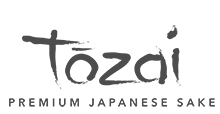Learn About Sake
RICE BECOMES SOMETHING MUCH, MUCH MORE
How Sake Is Made
Not a wine, not a spirits and actually crafted closer to a process like brewing beer yet not a beer either. The magic of rice, koji and water allow for a simple grain of rice becomes something in a class all in its own.

1. Rice is Harvested
There are many types of sake rice that can be chose for brewing, all contribute to different flavor profiles.

2. Rice is Polished
The rice grains are polished to remove the outer layers, leaving the starchy center in tact.

3. Rice Washing & Soaking
Rice is washed to remove the any powder or residue from polishing and then the rice is soaked.

4. Rice Steaming
The rice is steamed for about an hour. The target temperature of the rice is 100 degrees Celsius.

5. Koji Production
15-20% of the steamed rice is taken to a special room where Koji mold will be slowly cultivated.

6. Yeast Starter
In a small tank, some of the koji rice, steamed rice, yeast and water are combined to start fermentation.

7. Three Step Additions
Over 4 days, the amount of water, koji rice, steamed rice and water are gradually increased.

8. Main Fermentation Mash
During the 30-40 day process, koji and yeast are converting the rice's to sugar; at the same time the sugar is being converted into alcohol.

9. Pressing & Filtering
The mash is pressed to separate solids from the liquid. For nigori sake, the raw sake may go through a course filtering or rice solids may be added back in to achieve the style.

10. Dilution
Majority of sake are diluted with water after filtration to reduce the alcohol content. The average sake ABV is around 16%.

11. Bottling
The sake is bottled (or canned!) after dilution. Most sake are also pasteurized either before or after bottling to preserve freshness.
Illustrations by Julie Qiu
TO SIPPING YOUR OWN WAY
How to Enjoy Sake
Time - rice and water and tradition, slowed and still, anchored with each sip. The ancient traditions of sake create a timeless moment for all who sip, yet Tozai also invites you to enjoy the sake of now, for today's moments. So drink deep, however you choose to enjoy.
Most premium sake is best enjoyed slightly chilled. Heating premium sake can mask the nuanced flavors.
If you prefer warm sake, our favorite Tozai to try warmed is Typhoon.

TO A BETTER-FOR-YOU BEVERAGE
Benefits of Sake
Premium Japanese sake has a range of healthful benefits. So sip unapologetically.
- Low Sugar - less sugar than most other alcohols
- Low in Tartaric Acid - The primary acid in wine that causes acid reflux and erosion of teeth enamel
- Free of Tannins and Sulfites - For those looking to avoid wine headaches
- Gluten Free - Good for those who are sensitive or celiac
- 80% Water Based - Arguably more hydrating than other alcoholic beverages
- Contains Amino Acids, Enzymes & Antioxidants - Sake contains numerous amino acids, healthful enzymes and antioxidants, like Ferulic acids, that can prevent osteoporosis, improve skin texture and contribute to other health benefits.
